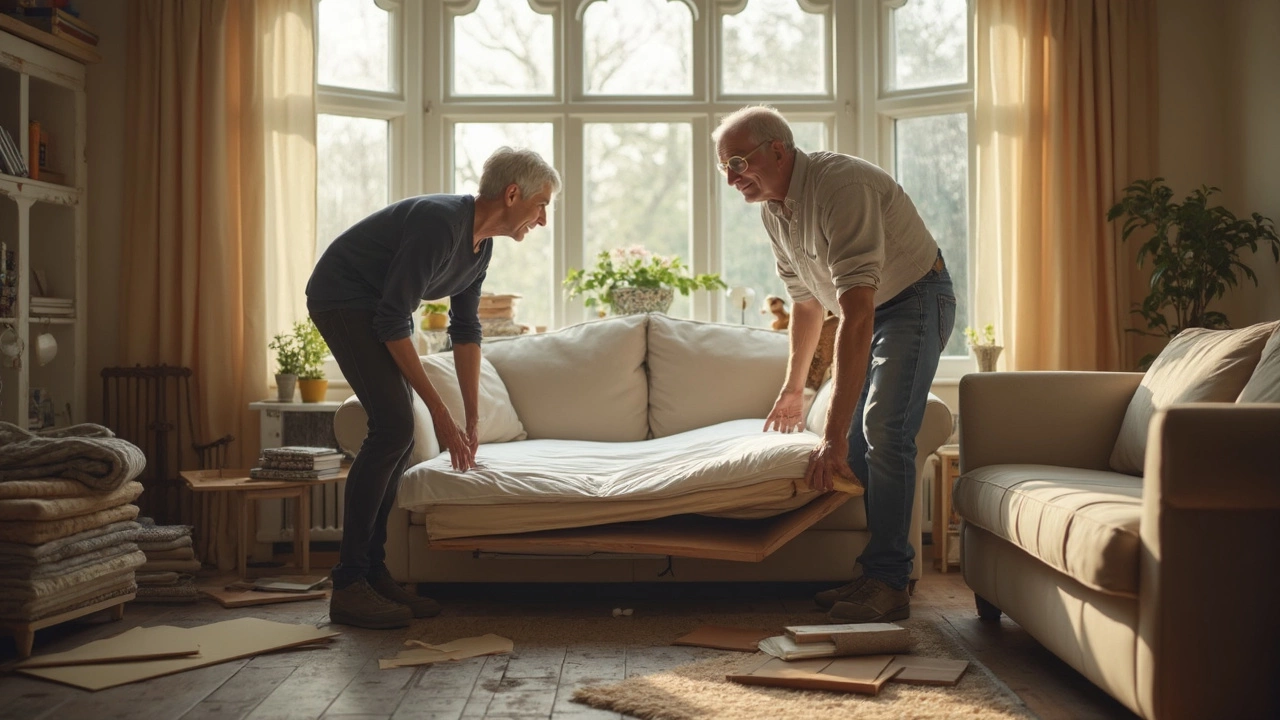Support Sofa Bed: How to Choose, Maintain, and Extend Its Life
If you’ve ever struggled to pull a sofa bed out of its hiding spot or found the mattress sagging after a few weeks, you know how important good support is. A well‑supported sofa bed not only feels comfortable but also lasts years without squeaking or breaking. Below you’ll get straight‑forward advice on what to look for, how to set it up, and simple habits that keep it in tip‑top shape.
Key Elements of Good Sofa Bed Support
Frame material matters. Hardwood frames—especially oak, beech, or maple—are the gold standard because they resist warping and can hold the weight of sleepers and daily sitting. Metal frames are lighter and often cheaper, but they can bend over time if the joints aren’t reinforced.
Mechanism type. Pull‑out sofas use either metal rails or a folding metal plate (also called a ‘piano hinge’). Rails slide smoothly and handle heavier loads, while folding plates are quieter but may feel less sturdy. Test the mechanism in the store; it should glide with minimal effort and lock securely when closed.
Mattress support. The mattress sits on a platform or slats. Thick slats (at least 1‑inch wide) spaced no more than 2‑3 inches apart give the best support. Some high‑end models include a spring‑loaded support system that raises the mattress for easier setup—great for folks with limited back strength.
Weight capacity. Check the manufacturer’s rating. A typical sofa bed supports 250‑300 lb per person, but if you expect heavier guests, aim for a model rated at 350 lb or more. The higher the capacity, the more robust the internal structure.
Everyday Care Tips
Rotate the mattress. Just like a regular bed, the sleeping surface will develop indentations where you lie most often. Rotate it 180 degrees every three months to spread wear evenly.
Keep the mechanism clean. Dust can build up in the rails or hinges and cause squeaks. Wipe them down with a dry cloth monthly and use a silicone spray sparingly if the movement feels sticky.
Mind the placement. Avoid putting the sofa bed directly on carpet if the frame has metal legs; the carpet can trap moisture and cause rust. A hard‑floor surface with a non‑slip pad underneath is ideal.
Don’t overload. It’s tempting to invite friends over and cram everyone onto the sofa bed, but exceeding the weight limit shortens its lifespan. Use it for sleeping, not as a permanent extra couch.
Cover it up. A washable slipcover protects the upholstery from spills and pet hair, which can pull on the frame over time. Choose a breathable fabric that lets the mattress breathe, preventing mold.
When it’s time to store the sofa bed for a season, pull the mattress out, lay it flat on a clean surface, and cover it with a breathable sheet. Avoid stacking heavy boxes on top of it, as they can compress the support system.
By paying attention to the frame, mechanism, and mattress support, you’ll enjoy a sofa bed that feels like a proper bed and a sturdy couch. Follow the simple care steps—rotate, clean, and protect—and you’ll skip the costly repairs and keep guests comfortable for years to come.
Stop Sofa Bed Sagging: Easy Fixes and Tips
Sagging sofa beds are a common headache, but they're not a lost cause. This article breaks down why sleeper sofas lose their support and offers straightforward solutions you can try right now. Learn quick fixes for short-term relief and smart upgrades for lasting comfort. The tips are simple, affordable, and use stuff you might already have at home. Don’t toss your old sofa bed—bring it back to life with these practical steps.
More
